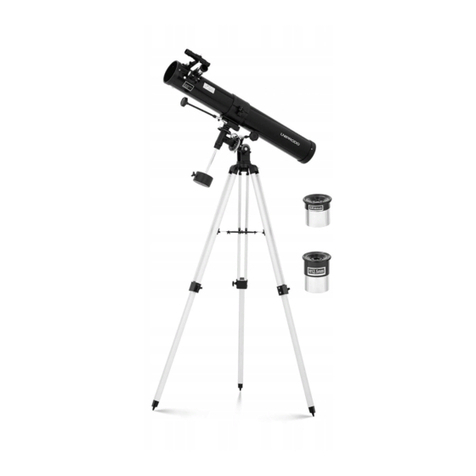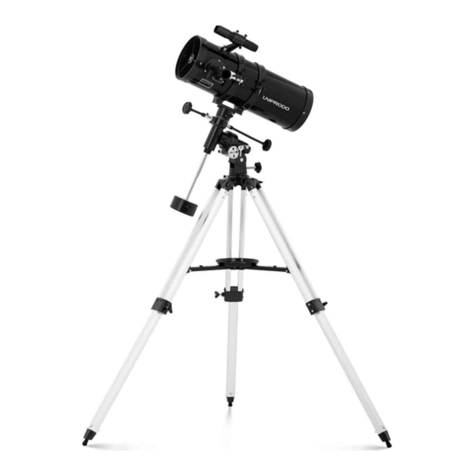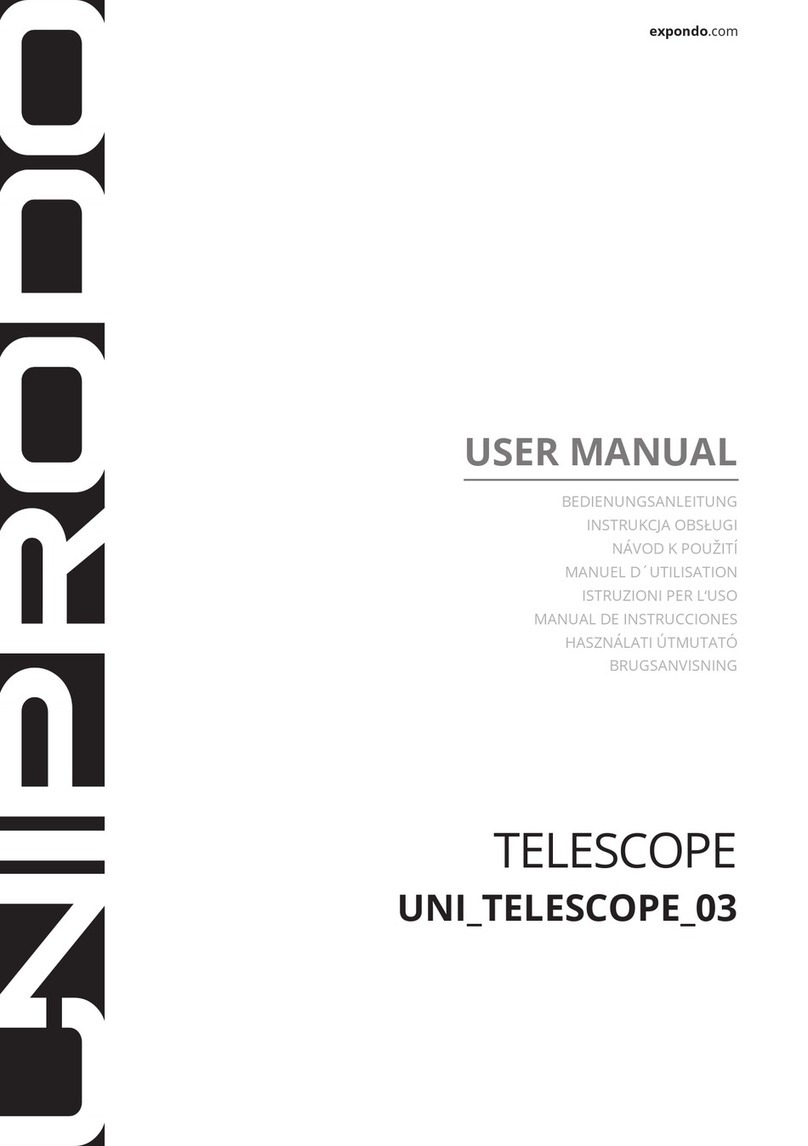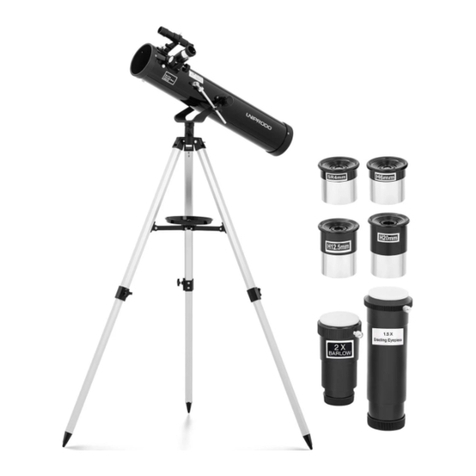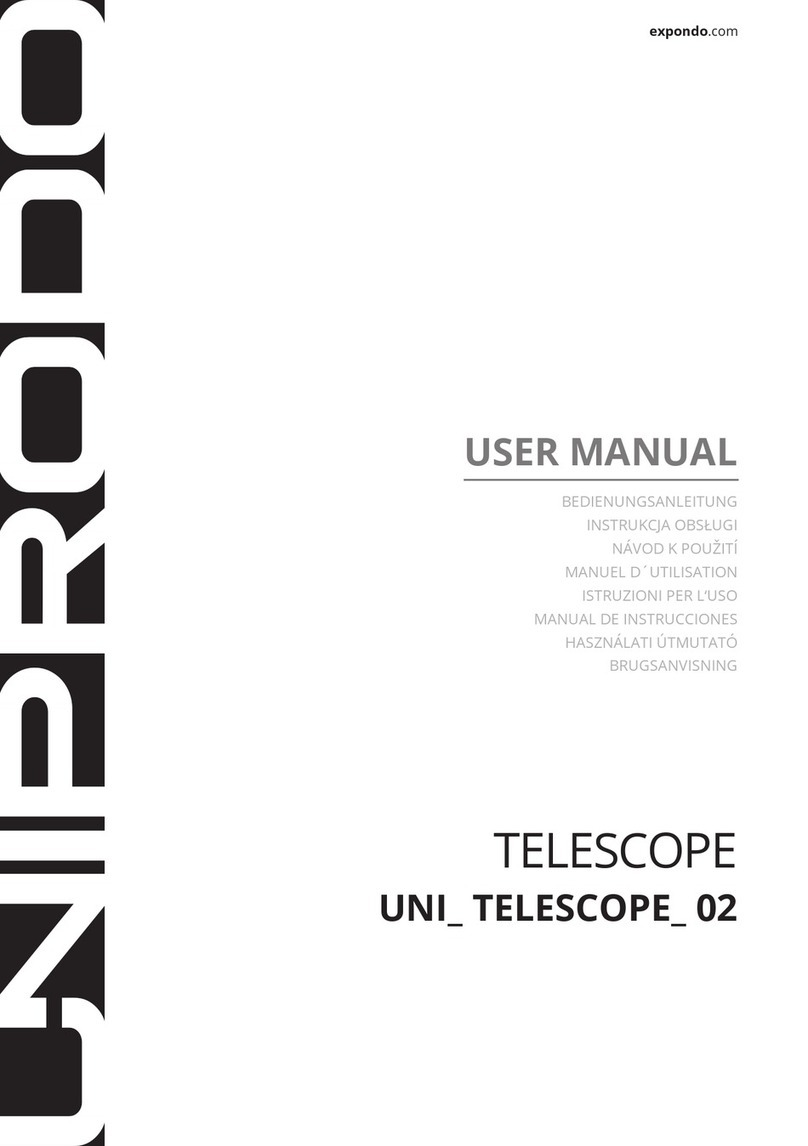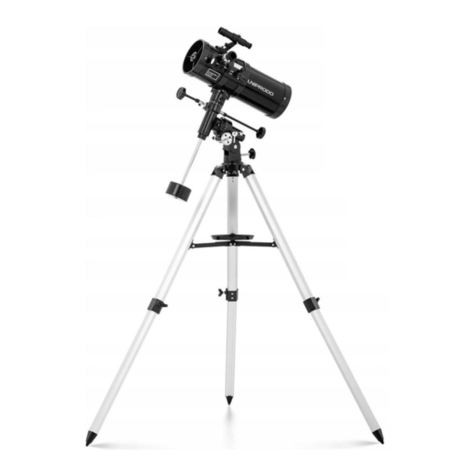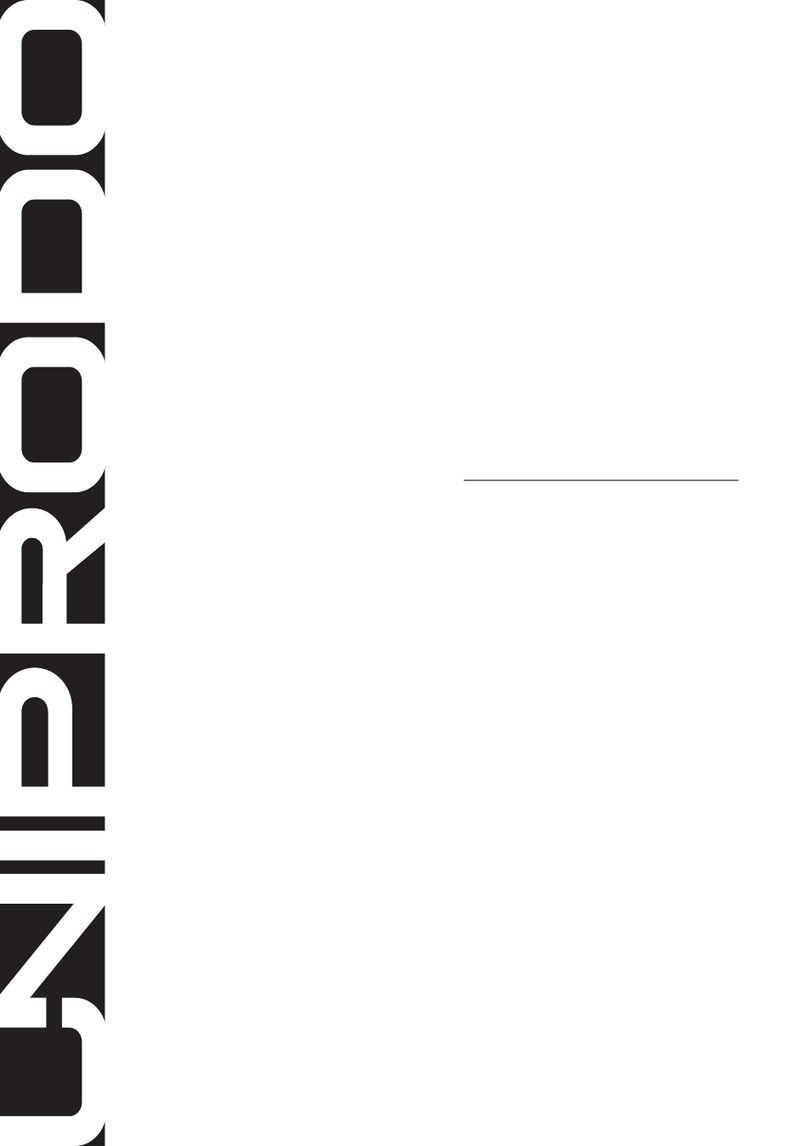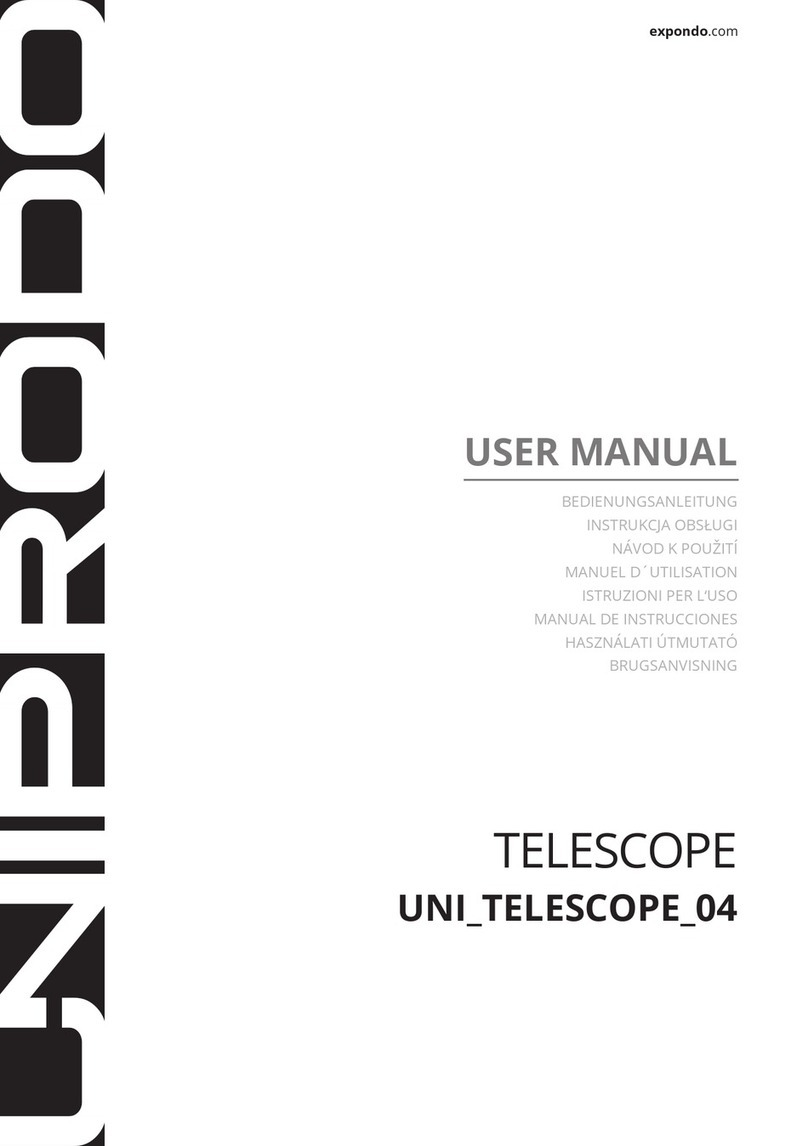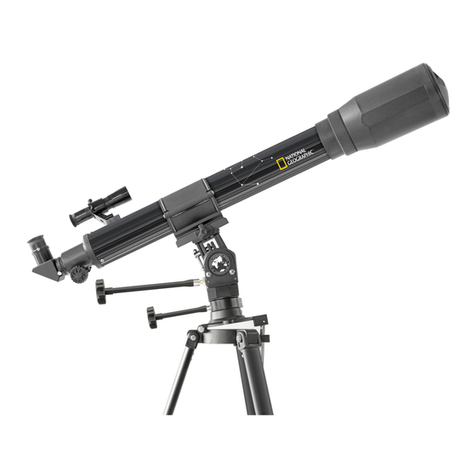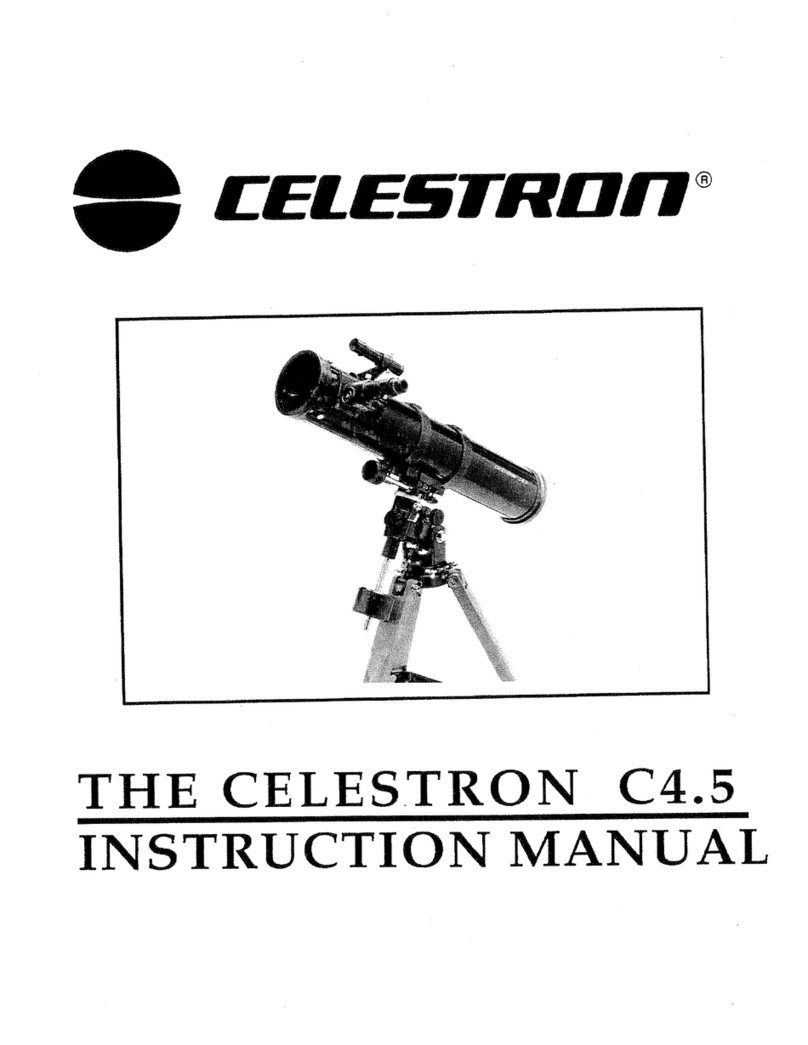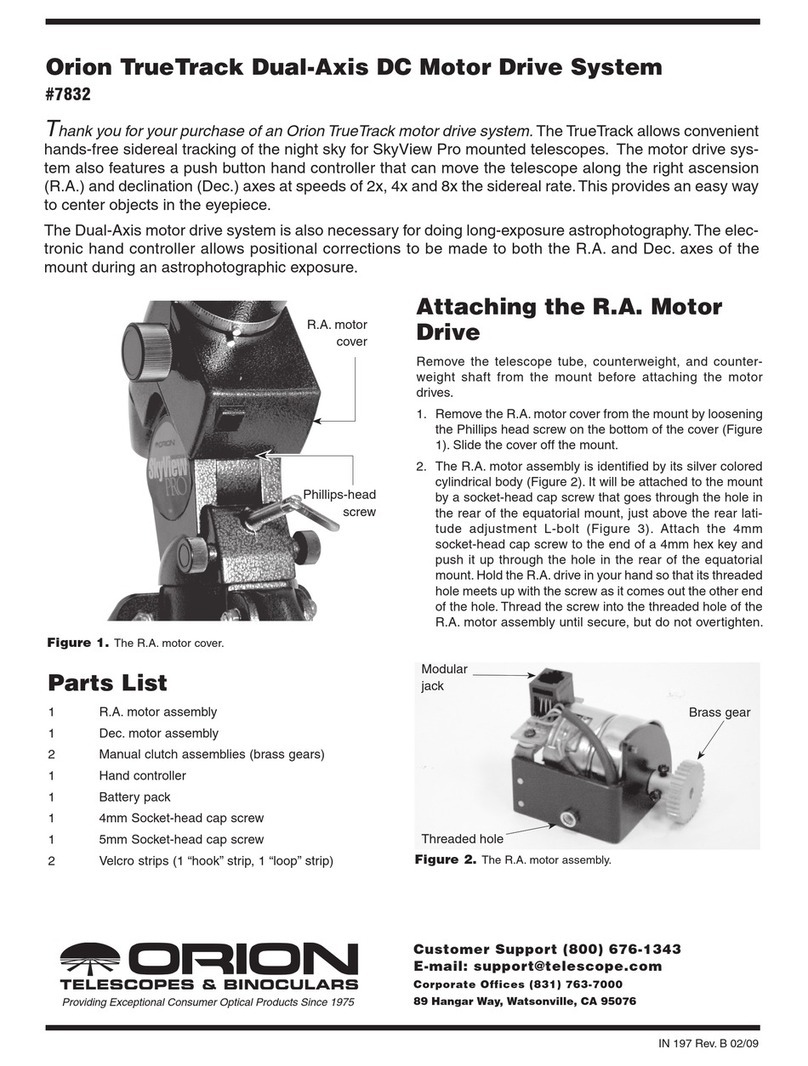
14 15
01.10.2019
IT
MANUAL DE INSTRUCCIONES
ES
3. Oculare di raddrizzamento - utilizzato per
aumentare l'ingrandimento dell'oculare durante
le osservazioni terrestri e ripristina il corretto
orientamento dell'immagine dell'oggetto
osservato.
Nota: lenti e filtri devono essere installati
nell'oculare sul lato opposto a quello dove si vuole
posizionare l'occhio.
PULIZIA E MANUTENZIONE
a) Per pulire la superficie utilizzare solo detergenti
senza ingredienti corrosivi.
b) Tenere l'apparecchio in un luogo asciutto, fresco,
protetto dall'umidità e dalla luce diretta del sole.
c) Per la pulizia, utilizzare un panno morbido, privo
di polvere, non sfilacciante.
d) Conservare il prodotto in un luogo non esposto
alle alte o basse temperature, alla polvere e agli
agenti chimici.
DATOS TÉCNICOS
Parámetro -
Descripción
Parámetro - Valor
Nombre del producto Telescopio
Modelo UNI_TELESCOPE_01
Apertura [mm] 60
Focal 900
Buscador 5x24
Dimensiones [mm] 1250x840x1285
Peso [kg] 2,40
a) Se prohíbe mirar directamente y a través de la
lente a una fuente luminosa, ya que puede causar
daños en la vista y ataques de epilepsia.
b) Se prohíbe dejar la lente de aumento sin
supervisión en lugares con radiación solar directa
debido al riesgo de provocar un incendio. Al
finalizar el trabajo, recuerde cubrir la lente con el
protector.
c) Se prohíbe apuntar el haz luminoso concentrado
por la lente a animales o personas, puesto que
puede provocar quemaduras.
d) Se prohíbe utilizar el producto en lugares donde
puedan darse temblores para evitar daños en el
ojo.
INSTRUCCIONES DE USO
El producto está indicado para observar objetos que
se encuentren a gran distancia y para observaciones
astronómicas.
El usuario es responsable de los daños derivados de
un uso inadecuado del aparato.
CONDIZIONI D'USO
1. Regulador de altura
2. Perilla de regulación de la nitidez
3. Tubo de enfoque
4. Prisma angular
5. Ocular
6. Soporte del buscador
7. Buscador
8. Tubo principal
9. Filtro solar
10. Lente
11. Tornillo de bloqueo de la abrazadera
12. Tornillo de sujeción de la regulación
13. Soporte de la abrazadera
14. Bloqueo del acimut
15. Cabezal del trípode
16. Balda para accesorios
17. Pata del trípode
18. Tope de goma
INSTALACIÓN
¡ATENCIÓN! La ilustración de este producto se
encuentra en la última página de las instrucciones p.
17.
1. Regule la longitud de las patas del trípode y
después bloquee la posición con los tornillos de
sujeción (imagen 1).
2. Conecte las patas del trípode al cabezal del trípode
mediante el tornillo y la tuerca mariposa (imagen
2a).
3. Ajuste la balda para accesorios con los tornillos y
las tuercas (imagen 3).
4. Instale el tubo principal en el cabezal del trípode
y apriételo con el tornillo de bloqueo de la
abrazadera (imágenes 2b, c).
5. Instale el soporte del buscador en la superficie
del tubo principal mediante los tornillos alados
(imagen 4).
6. Instale el prisma angular en el tubo de enfoque y
asegúrelo con el tornillo de ajuste (imagen 5).
7. Instale el ocular en el prisma angular y a
continuación regule su posición y asegúrelo con el
pequeño tornillo de ajuste (imagen 6).
8. En caso de usar accesorios ópticos adicionales
(como lentes Barlow), se deben instalar entre el
ocular y el tubo de enfoque (imagen 7).
ENFOQUE DEL TELESCOPIO Y AJUSTE DEL BUSCADOR
Atención: se recomienda llevar a cabo las siguientes
actividades a la luz del día.
1. Instale el ocular de menor aumento en el prisma
angular.
2. Dirija el telescopio hacia un objeto fácilmente
reconocible. El objeto debe encontrarse en el
centro del campo de visión del telescopio.
3. Asegure la posición del telescopio con los tornillos
de ajuste.
4. Mire a través del buscador. Regule su posición
mediante la tuerca de regulación demnaera que
el objeto observado a través del telescopio se
encuentre en el centro del visor del buscador.
5. Después de regular el buscador, asegure su
posición mediante los tornillos de cierre.
OCULAR Y AMPLIACIÓN
El telescopio está equipado con distintos tipos de
oculares. La potencia de cada uno de ellos depende de
la distancia focal del espejo principal.
¡ATENCIÓN! El despiece de este producto se
encuentra en las últimas páginas de las instrucciones
p. 17.
P= A
B
P. Ampliación del telescopio
A. Distancia focal del espejo principal
B. Distancia focal del ocular
FUNCIONES Y EQUIPAMIENTO ADICIONAL
1. Lente Barlow – elemento auxiliar al ocular del
telescopio. Alarga la distancia focal del telescopio,
por lo que amplía adicionalmente la imagen del
objeto observado.
2. Filtro lunar – elemento auxiliar al ocular del
telescopio. Reduce la cantidad de luz que pasa
por el sistema óptico a través de los filtros de
polarización.
